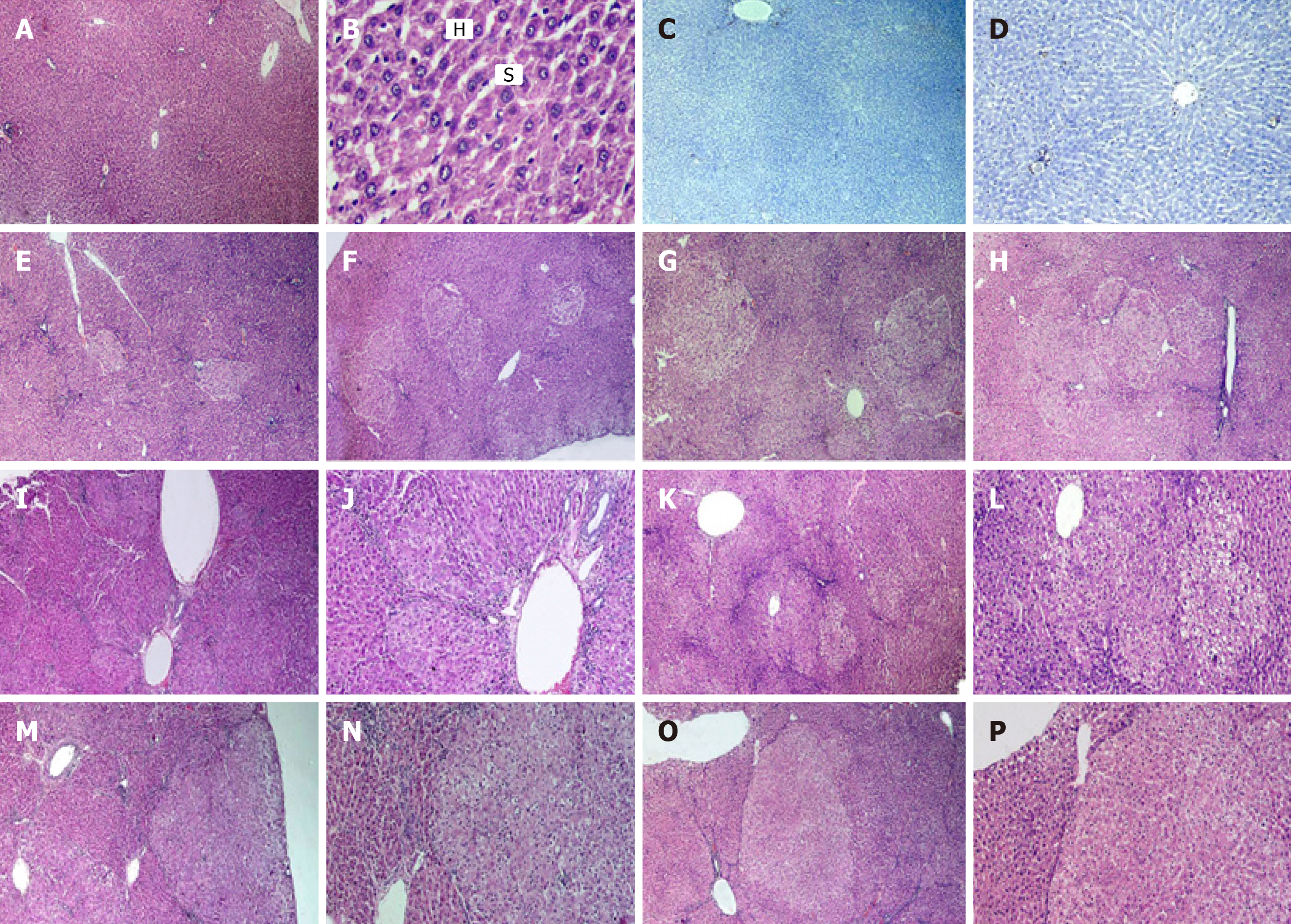Copyright
©The Author(s) 2021.
World J Hepatol. Mar 27, 2021; 13(3): 328-342
Published online Mar 27, 2021. doi: 10.4254/wjh.v13.i3.328
Published online Mar 27, 2021. doi: 10.4254/wjh.v13.i3.328
Figure 2 Histological and immunohistochemical examination.
A-D: Images of liver sections of naive group. Hematoxylin-eosin (HE) stained sections show normal hepatic architecture, portal triad, central vein and radiating cords of hepatocytes (H) with blood sinusoids (S) present in between (A and B). Immunohistochemically-stained section with anti-glutathione S transferase-P demonstrating negative reaction (C). Immunohistochemically-stained section with proliferating cell nuclear antigen antibodies (D); E-H: HE images of liver sections of rats that received diethylnitrosamine (DEN) and different doses of 2-acetylaminofluorene (2-AAF) and were sacrificed at week 10. Show multiple foci of cellular alteration of different sizes (dotted shapes), not compressing the surrounding hepatic parenchyma. DEN group (E), DEN+ 2-AAF 100 mg group (F), DEN + 2-AAF 200 mg group (G) and DEN + 2-AAF 300 mg group (H); I-P: HE liver sections of rats that received DEN and different doses of 2-AAF sacrificed at week 16, show larger, well discriminated, less differentiated dysplastic nodules compressing the surrounding liver tissue with disruption of hepatic lobular architecture were observed. DEN group (I and J), DEN + 100 mg 2AAF group (K and L), DEN + 200 mg 2AAF group (M and N), DEN + 300 mg 2AAF group (O and P). A, C, E-H × 40; D, J, L, N and P × 100; I, K, M and O × 40, B × 400.
- Citation: Hasanin AH, Habib EK, El Gayar N, Matboli M. Promotive action of 2-acetylaminofluorene on hepatic precancerous lesions initiated by diethylnitrosamine in rats: Molecular study. World J Hepatol 2021; 13(3): 328-342
- URL: https://www.wjgnet.com/1948-5182/full/v13/i3/328.htm
- DOI: https://dx.doi.org/10.4254/wjh.v13.i3.328









